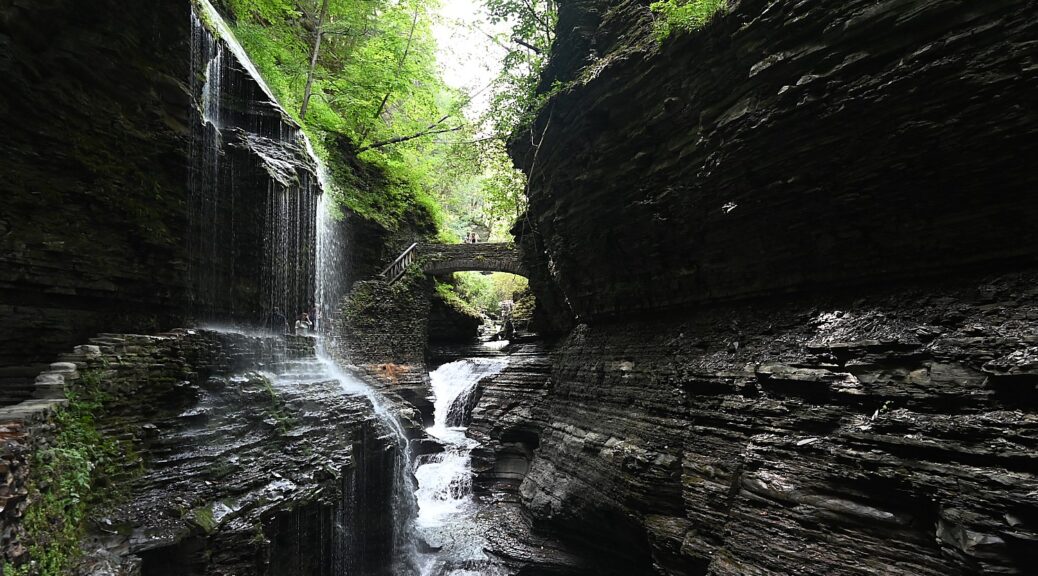By Karen Rubin, David Leiberman & Laini Miranda
Travel Features Syndicate, goingplacesfarandnear.com
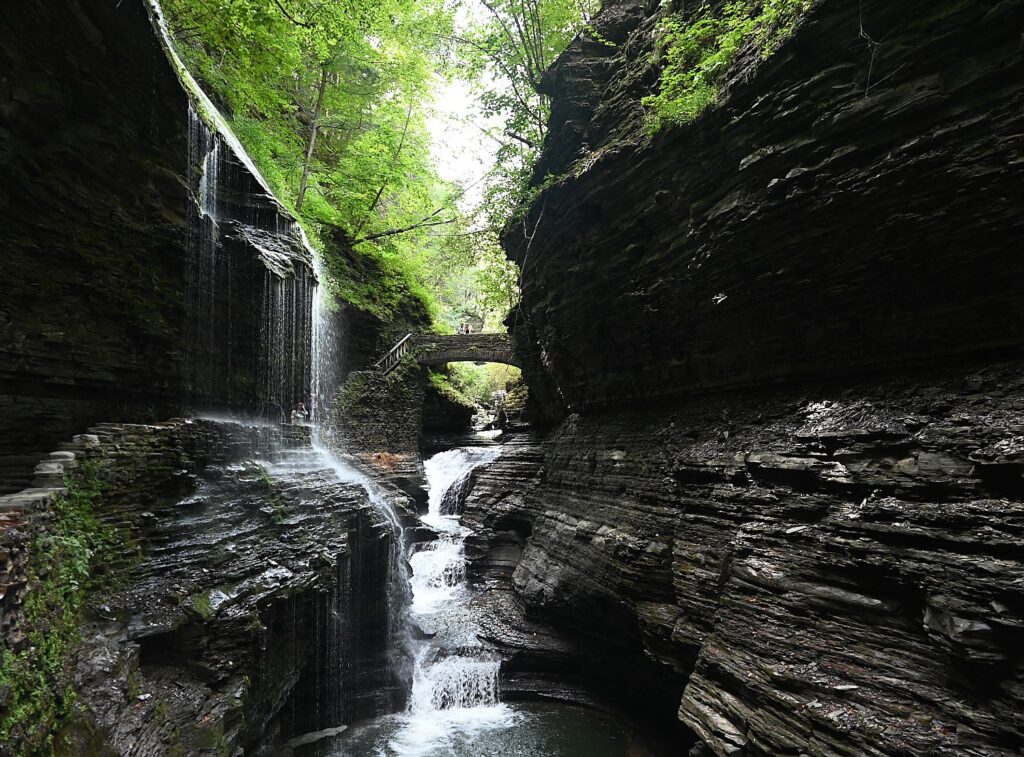
Walking the Gorge Trail in Watkins Glen State Park in New York’s Finger Lakes is, in a word, spellbinding.
The centerpiece of the 778-acre Watkins Glen State Park is a 400-foot deep, narrow gorge cut by the Glen Creek that was left “hanging” when glaciers of the last continental glaciation, some 12,000 years ago, deepened the Seneca valley, creating rapids and waterfalls through layers of hard rock. The textures and shapes of the soft shales, sandstone and limestone – which erode at different rates – are gorgeous.
If you have ever visited a slot canyon, and marveled at the smooth, twisted, perfectly contoured curves, walk the Glen Creek Gorge Trail, where you can watch Mother Nature working her magic.
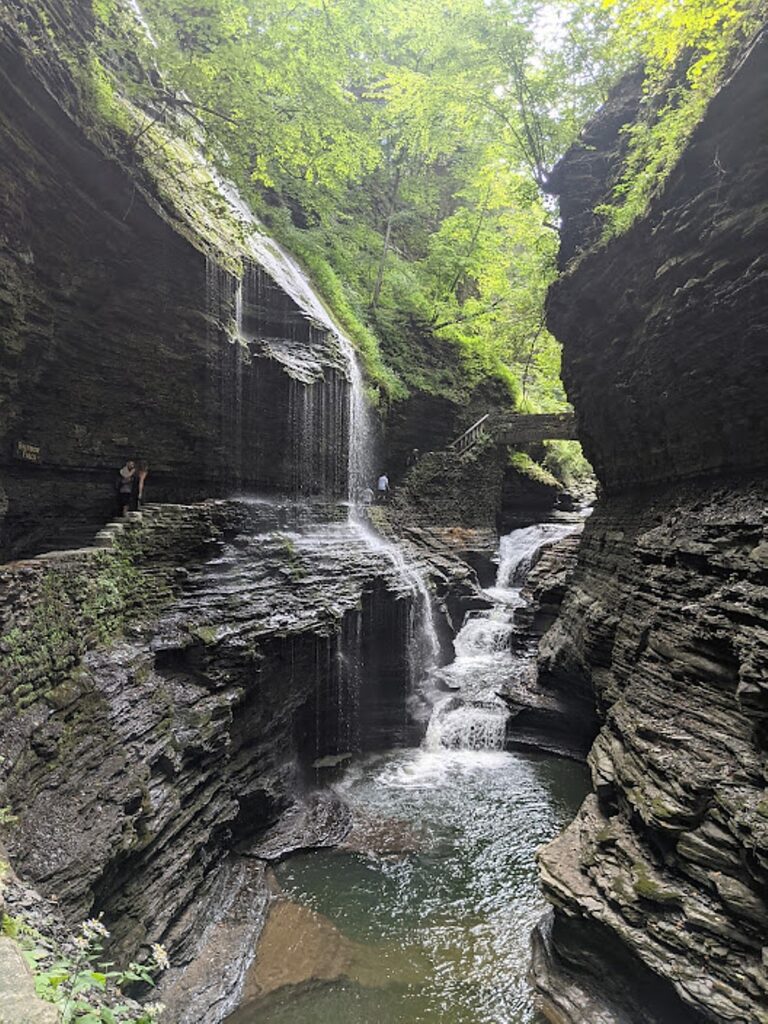
We don’t waste time after arriving at the Six Nations Campground in the park in the afternoon, in order to take advantage of the beautiful sunlight. So we drop out things and rush down to the Gorge Trail for a taste of what we will see more completely the next day.
In the course of a 1.5 mile stone trail, with 800 steps and beautiful stone bridges you see 19 incredible waterfalls.
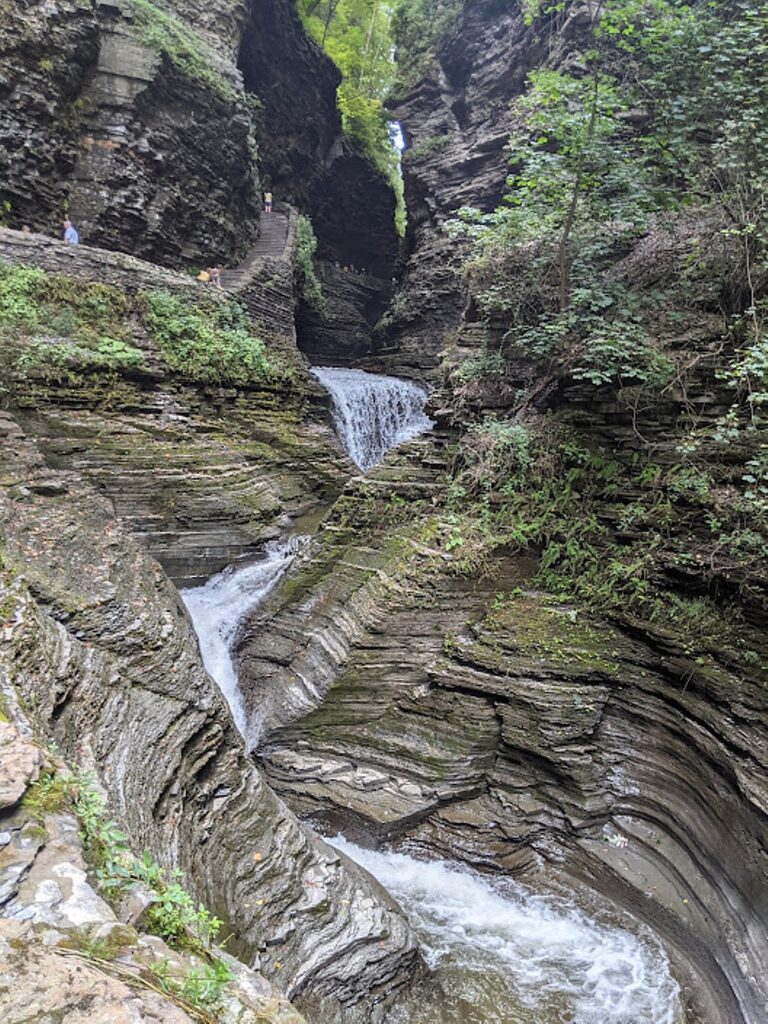
The waterfalls range from those that flow from dramatic heights of 200 foot-high cliffs, to those that cascade; you see waterfalls coming in together from different directions, cutting through the sedimentary rock of shale, sandstone and limestone, making exquisite, remarkably perfect shapes and cuts that are astonishingly precise and straight or curved, and cascades of falls that twist.
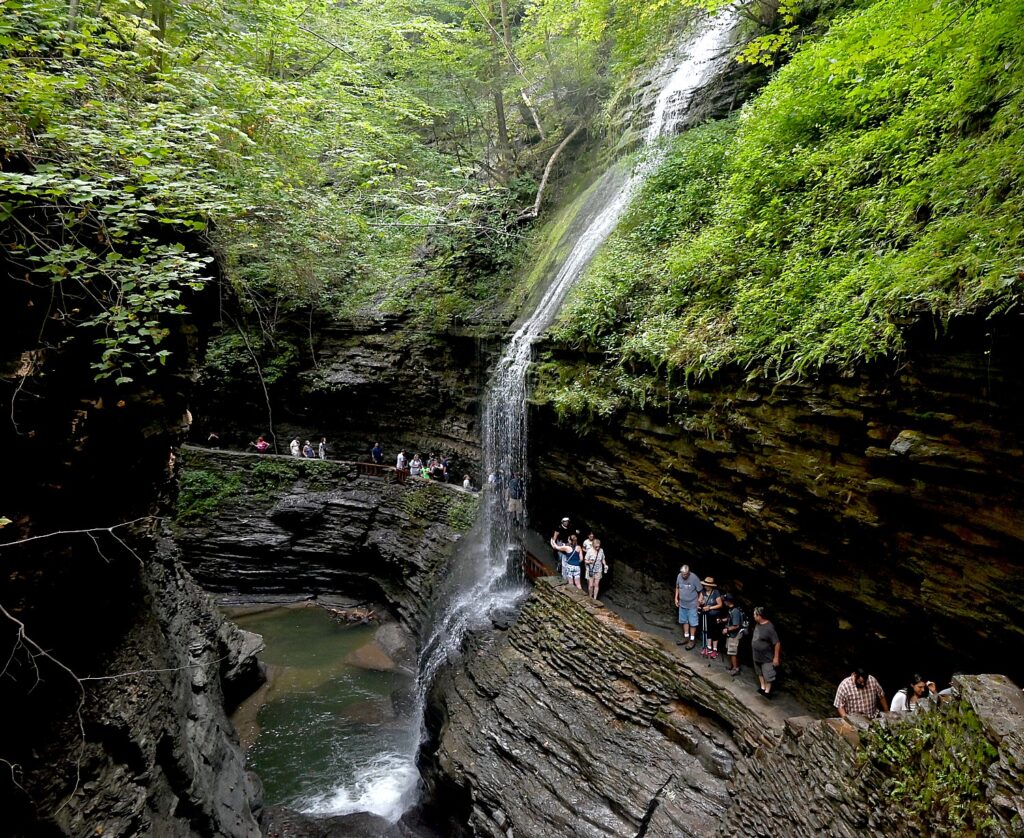
In this “hanging valley,” we also see “hanging gardens” – the tender mosses, ferns, mosslike plants (liverworts) that drape over the rocks and down the rock walls, the delicate plants that stubbornly grow, albeit slowly in crevasses in the rock walls. They depend on continuous moisture trickling down, and you can see differences in ecosystems based on the amount of sun, shade and moisture that a section of the rock wall gets. (Visitors are told not to pick anything.)
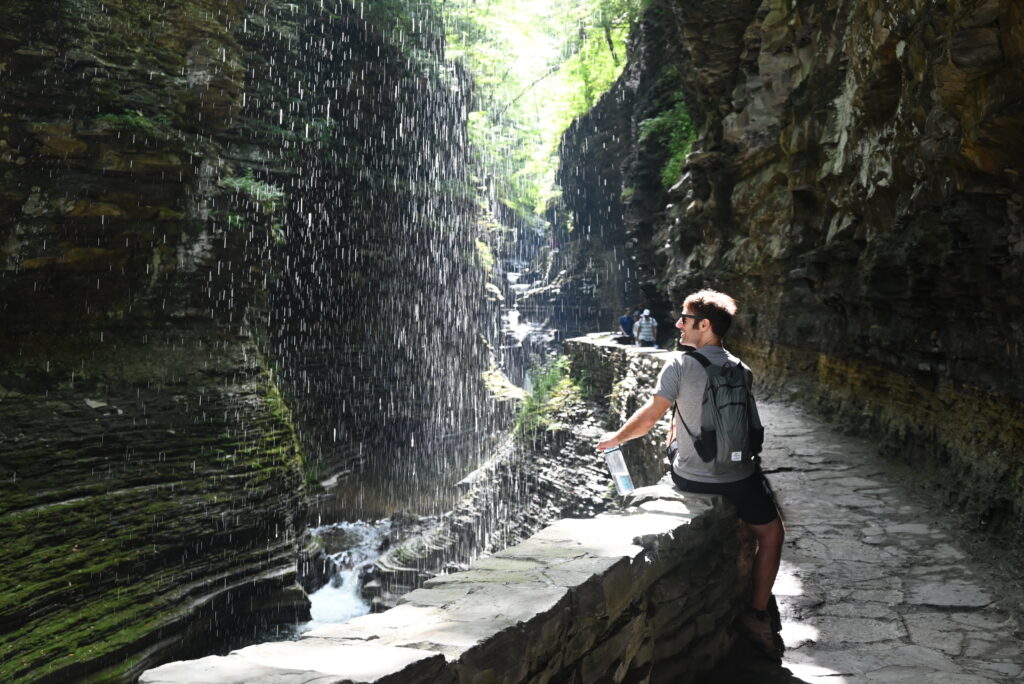
You are enveloped by a feeling of perfect peace – the sound of the flowing water, the cool of the green moss and moist rock, the fresh smell, the late afternoon light that turns the tops of the trees into shades of yellow and gold. The gorge is fairly narrow, so you feel cocooned in this primal, Jurassic Park-like setting.
Looking down into where the water flattens out at one point into soil what appeared to be a giant fossil skeleton, exposed in the low water. It is exciting to imagine.
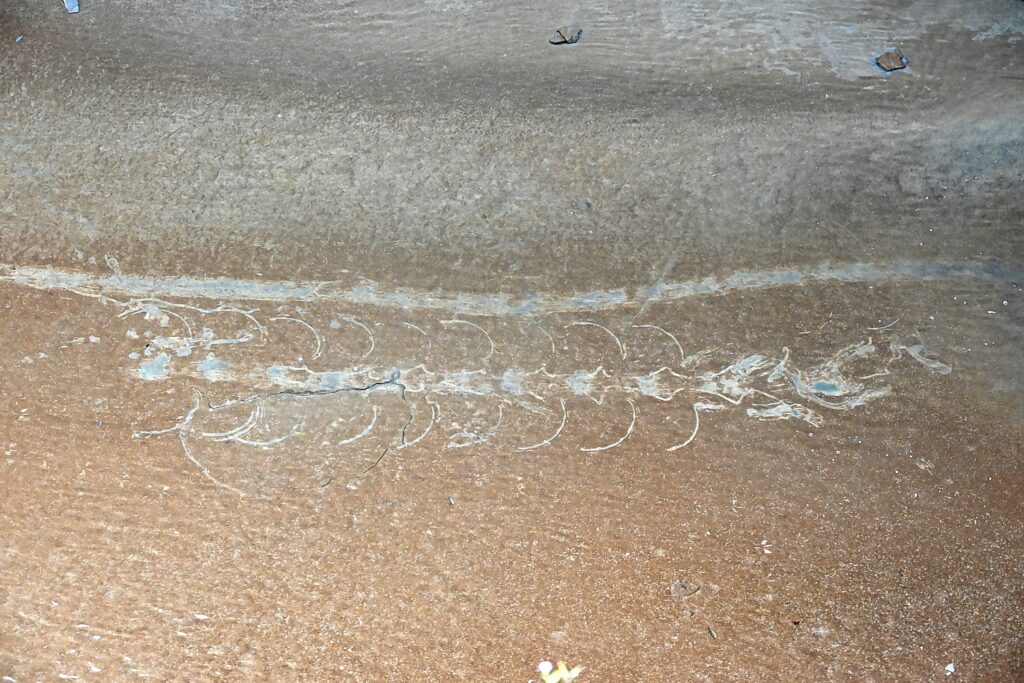
We walk back to Mile Point Bridge where we follow the trail back into the Six Nations Campground, after this brief survey mission.
Back at our campsite, we set up our tents and go downtown to where John, who checked us into the campground, had recommended as the best place in Watkins Glen for sunset: the marina on the southern tip of Seneca Lake. There is a rock wall that is very popular for people to walk out to watch. We opt to go to the Village Marina for dinner where we can dine outside and take in the sunset.
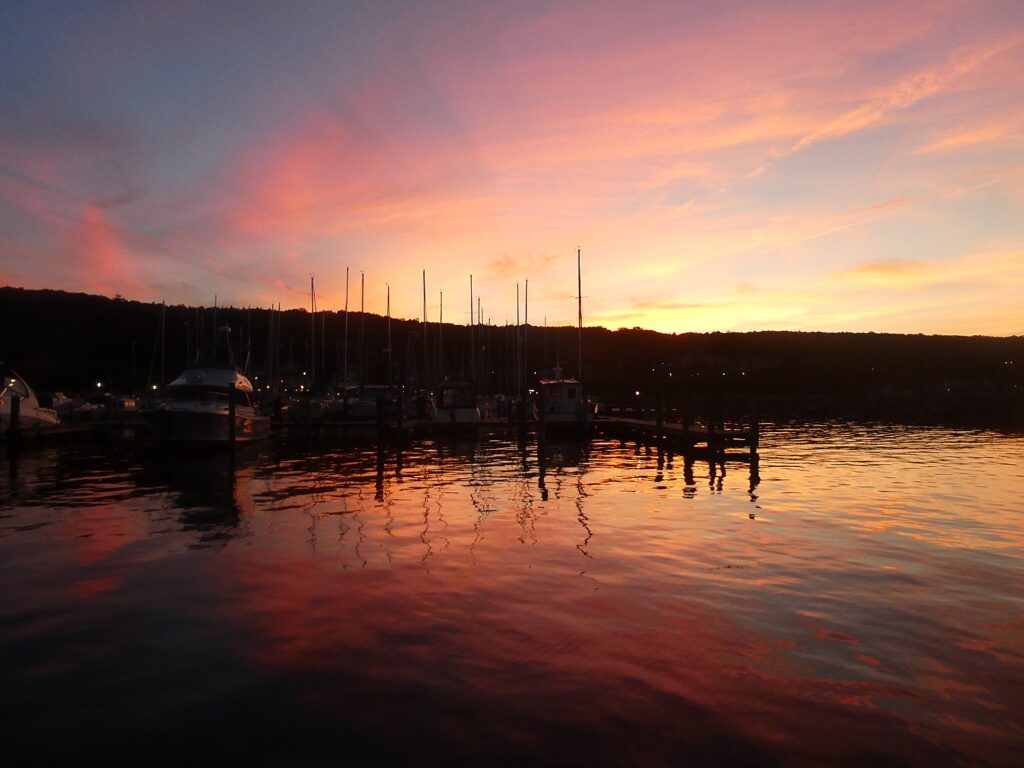
The colors that blaze through the sky, reflect back in the water, after the sun went behind the hills, are spectacular.
The next day, we stroll down from our campsite to the Gorge Trail.
We enter the Gorge Trail at Mile Point Bridge, giving us our first stunning view. We walk the half-mile to the end, at Jacob’s Ladder (a set of 180 stairs that goes to the Upper Entrance), and then return, choosing to go back along the Gorge Trail rather than connect to the Indian Trail that goes along the rim for views down into the Gorge. Going back this way on the Gorge Trail we go down in elevation towards the Main Entrance in the village (many people who don’t want to do the 1.5 mile trail both ways start park up here, hike down, and take a shuttle bus back, $5).

Just beyond the Mile Point Bridge is Frowning Cliff, a gorgeous waterfall, then the climatic scene, Rainbow Falls (most dramatic from the other direction on the way back; you walk behind the falls along the trail), aptly named because, on some afternoons, the sunlight comes at just the right angle to create rainbows.
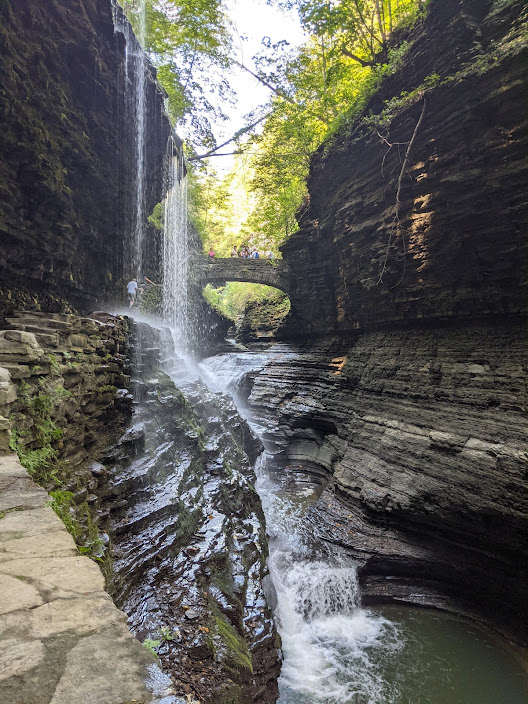
On to the Central Cascade (plunging more than 60 feet, this is the highest waterfall in the Gorge), Glen Cathedral (the horizontal layers of shale were formed 380 million years ago; ripples in the rock were created by wave action at the bottom of an ancient sea floor that eventually turned to stone), then a steeper descent, through the Spiral Tunnel (hand cut in 1927) to the Cavern Cascade, where you again walk behind the waterfall) and across Sentry Bridge (look for a round flume hole in the rock where, in the 1800s, water was once diverted to power a mill where the visitor center now stands) to the new Visitor Center and main entrance on Franklin Street in Watkins Glen.

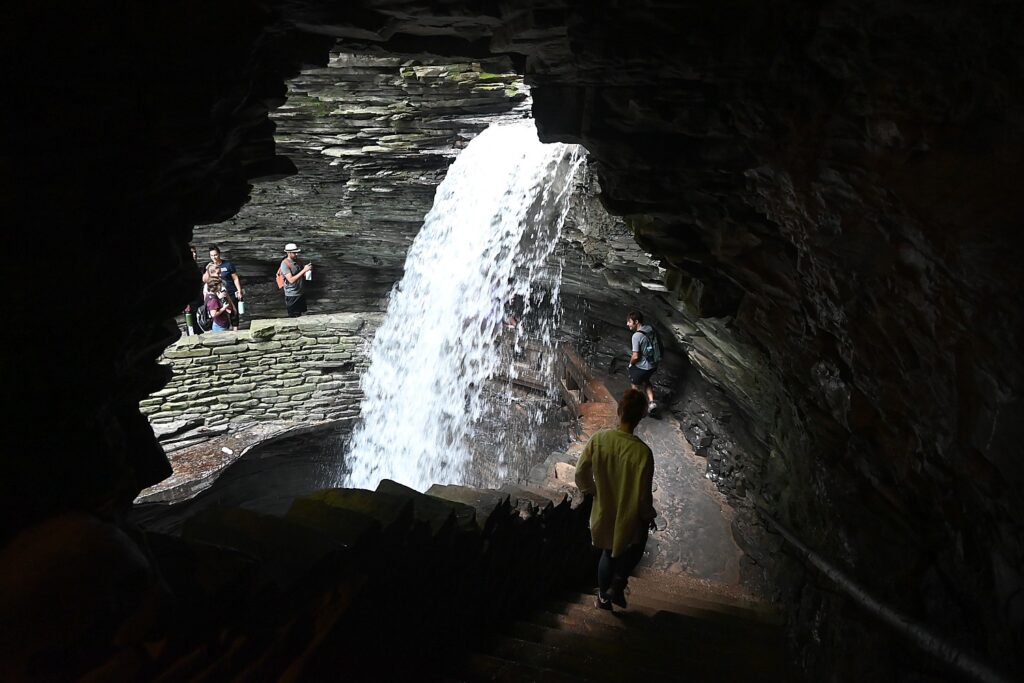
Along the way, we meet up with a park ranger who we tell about seeing what appeared to be a giant fossil. He tells us that it was exposed only two days before and might well be a titanoboa – a giant sea snake that could be as big as 45 feet long. This exciting news passes from one to another as people come to that spot to view it. Another park ranger tells us that a naturalist is coming to investigate.
For awhile, visitors to Watkins Glen State Park that morning had an extra thrill beyond the breathtaking scenery: the prospect of seeing a newly discovered fossil of a prehistoric sea snake, Monster in the Glen.
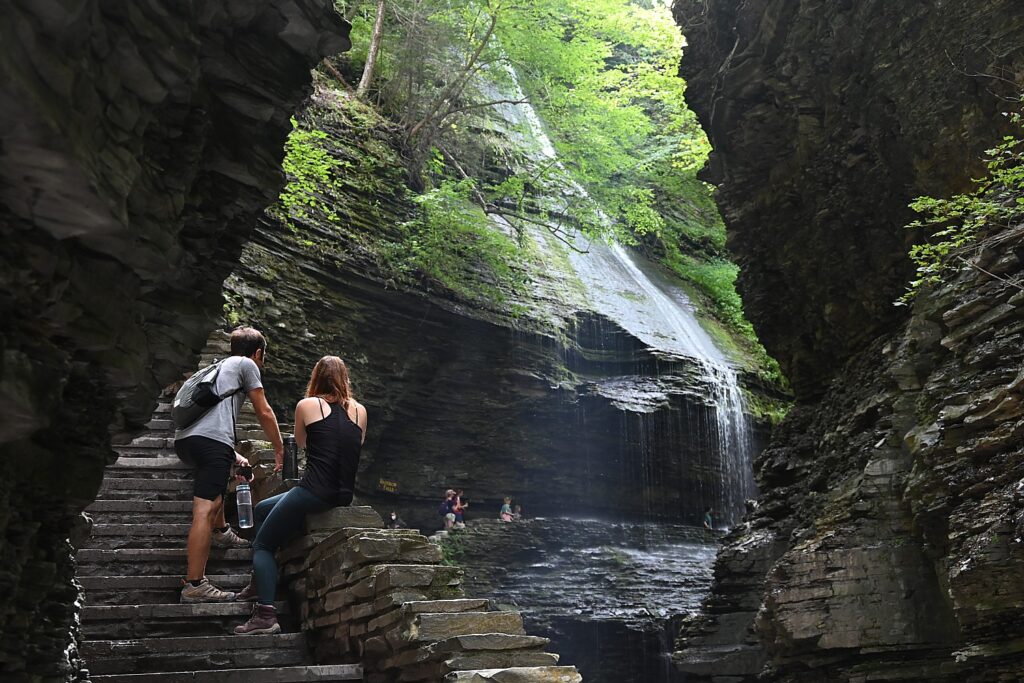
We finish walking the trail, have a delightful lunch at the Harbor Hotel on the lake. By now it is the afternoon and markedly less crowded (everyone seems to come out early for the walk) as we walk back on the Gorge Trail.
By the time we get back to where the “titanoboa fossil” would have been, we see the naturalist has etched in the soil, “Not a Fossil,” and smudged the image completely away, having revealed the fossil to be a hoax (people had remarked on what they thought were footprints leading to it).
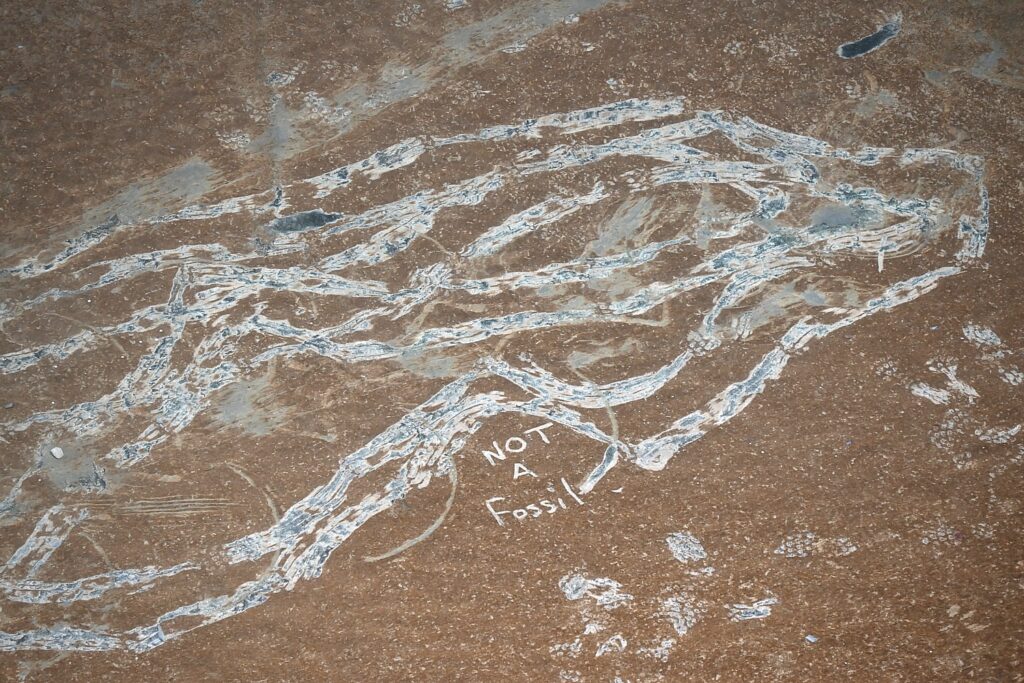
So, if we didn’t witness a major fossil discovery, we were witness to the hoax. ow the mystery is: Who created the hoax? How? Anyway, it got everyone buzzing that day.
Also, on my walk I saw in black rock what looked like an ammonite. That too was smudged away on our return.
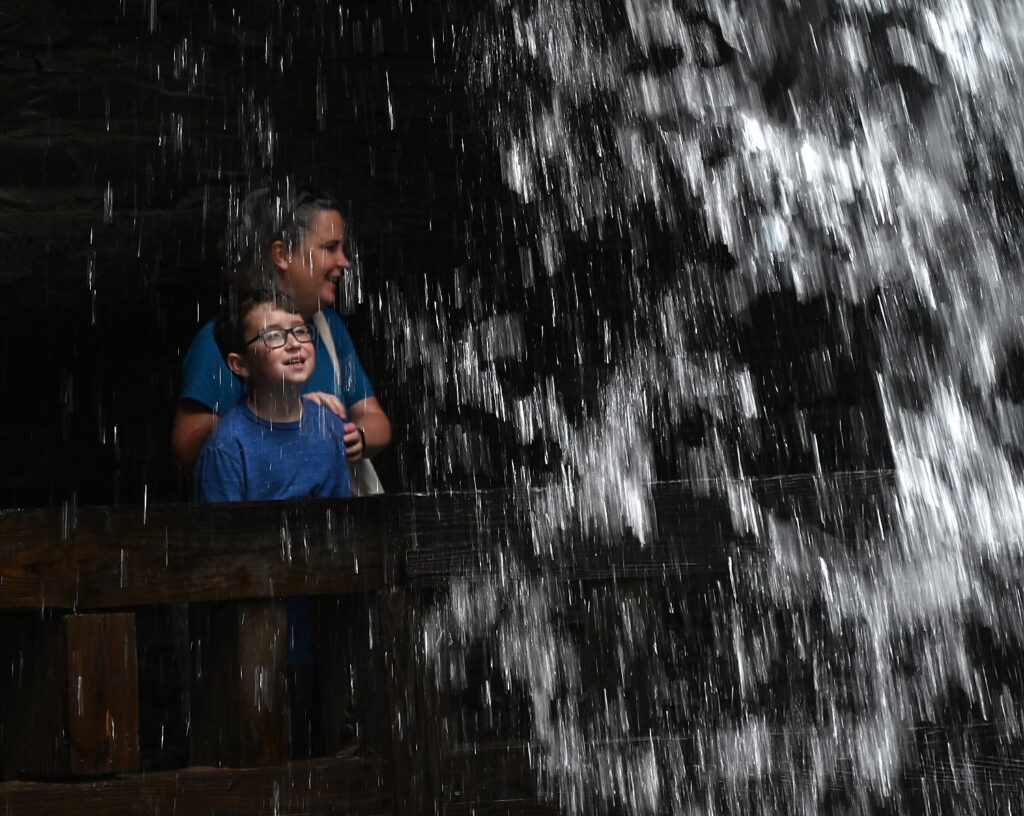
This stunning gorge has been visited by tourists since 1863 and was privately operated as a tourist resort ($1 admission per person, equivalent to $34 today) until New York State acquired the property, in 1906 for a state park. (It is named for Samuel Watkins; “glen” comes from a Greek word meaning “small, narrow, secluded valley”.). After the 1935 flood destroyed the trail, it was rebuilt with a stunning series of stone walks, staircases (there are 800 steps altogether), bridges and tunnels cut through the rock, by Franklin D Roosevelt’s Civilian Conservation Corps between 1935-1940. (You can do the trail one way and take a shuttle bus, $5, back).

Capping this experience is the beautiful Six Nations Campground – beautiful trees, excellent restroom facilities, and a glorious Olympic-sized pool. There are also a couple of pavilions that can be rented for groups and even the Iroquois Lodge, which is essentially a house that can be rented instead of a campsite (altogether, you can imagine a wedding here, with photos in front of waterfalls; there are also lovely accommodations in town including a luxury Watkins Glen Harbor Hotel, right on Seneca Lake, where we enjoy lunch). Where we camp, we are just a short walk down to the Gorge Trail.
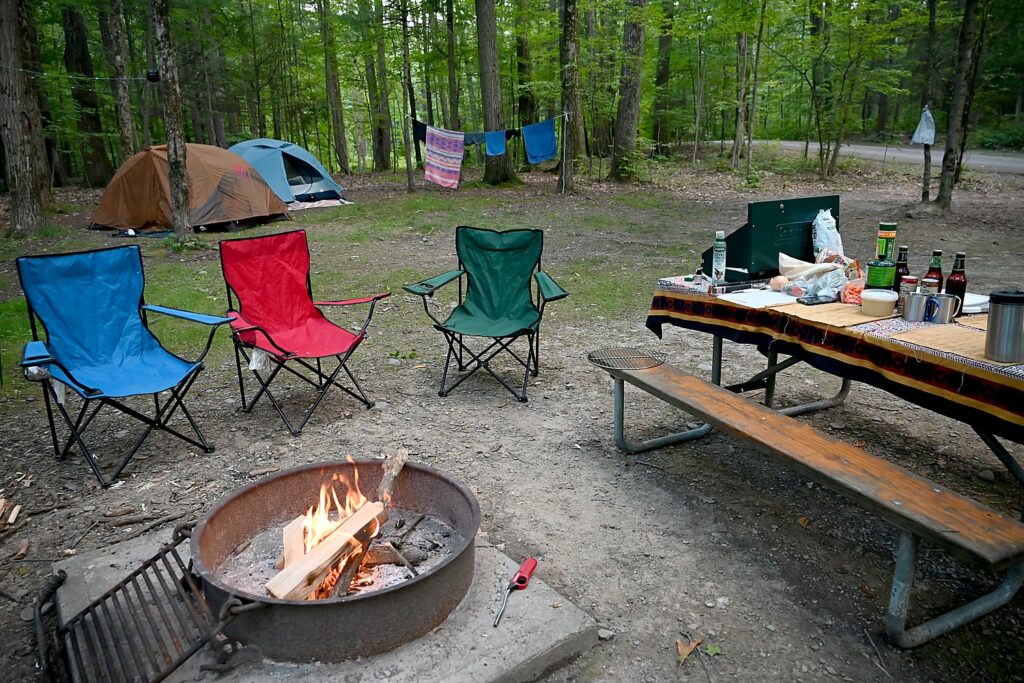
Six Nations Campground is named for the Haundenosaunee Confederation, more commonly known to us as Iroquois (Haundenosaunee means “They made the house”), a reminder of whose land this was before the European colonists came. The loops of the campground are named for the nations of the Confederacy: Mohawk, Oneida, Onondaga, Cayuga, Seneca and Tuscarora. The Haudenosaunee Confederacy, the park brochure notes, is renowned for its organization and democratic system, one of the first of its kind (Ben Franklin is said to have drawn upon the Iroquois Confederation for our US Constitution; suffragist Melinda Gage drew upon the Oneida’s matriarchal structure, in which women could be chiefs, own property, have custody of their children in a divorce, to set out demands for women’s rights in 1848).In 1842, what remained of the First Nations were relegated to the Six Nations Indian Reserve. (More information is available at nearby Ganondaganb State Historic Site, 7000 County Rd. 41 (Houghton Hill Rd), Victor, NY 14564).

There are seven moderate trails in Watkins Glen State Park ranging from 0.7 to 7.6 miles and from 479 to 1,171 feet above sea level, but we focus all our time on the Gorge Trail (1.5 miles), captivated by the views and the enchantment of the place. Other trails – the Indian Trail (2.4 miles) and the South Rim Trail (2.6 miles) provide views of the Gorge from above. You can connect from the Gorge Trail to Lovers Lane Loop which takes you to a Suspension Bridge for a view above the gorge. You can also do a Gorge Trail, Outer Rim and Finger Lakes Trail combination (7.6 miles, about 3 hours) (see alltrails.com for more detail). (The trail is closed in winter.)
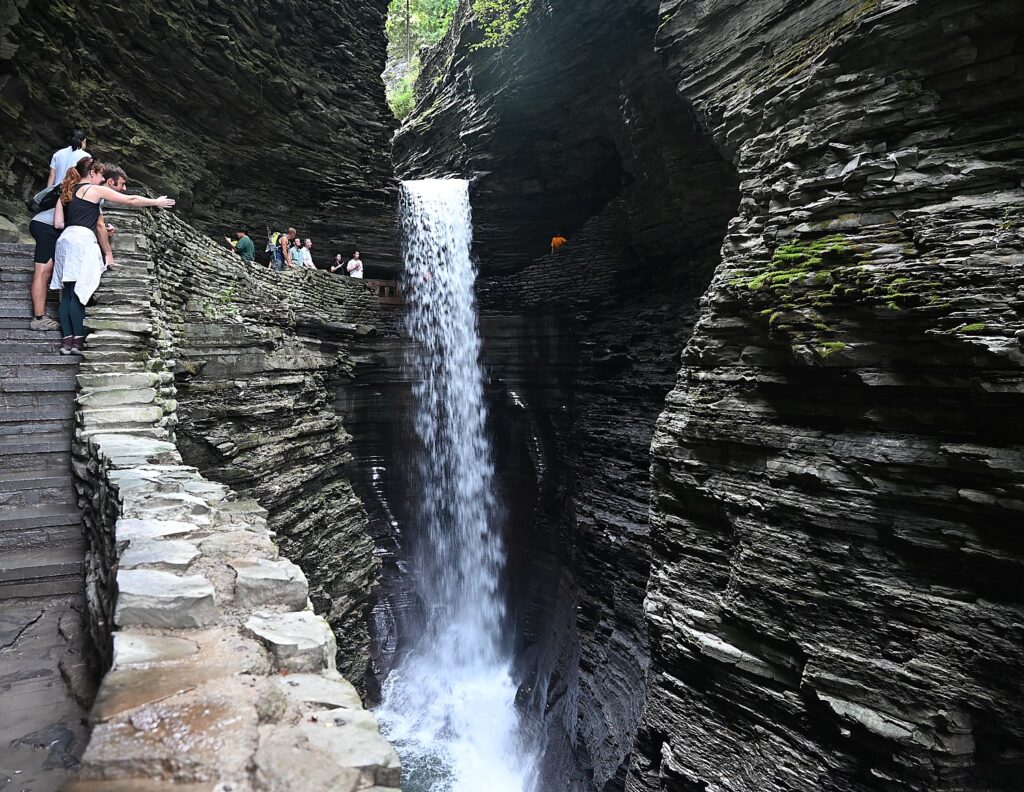
It’s about 3:30 in the afternoon when we return to the campsite. We go to the gorgeous, Olympic-sized pool to refresh before returning to the campsite for an amazing steak dinner David and Laini prepared over the campfire they built for our second night camping.
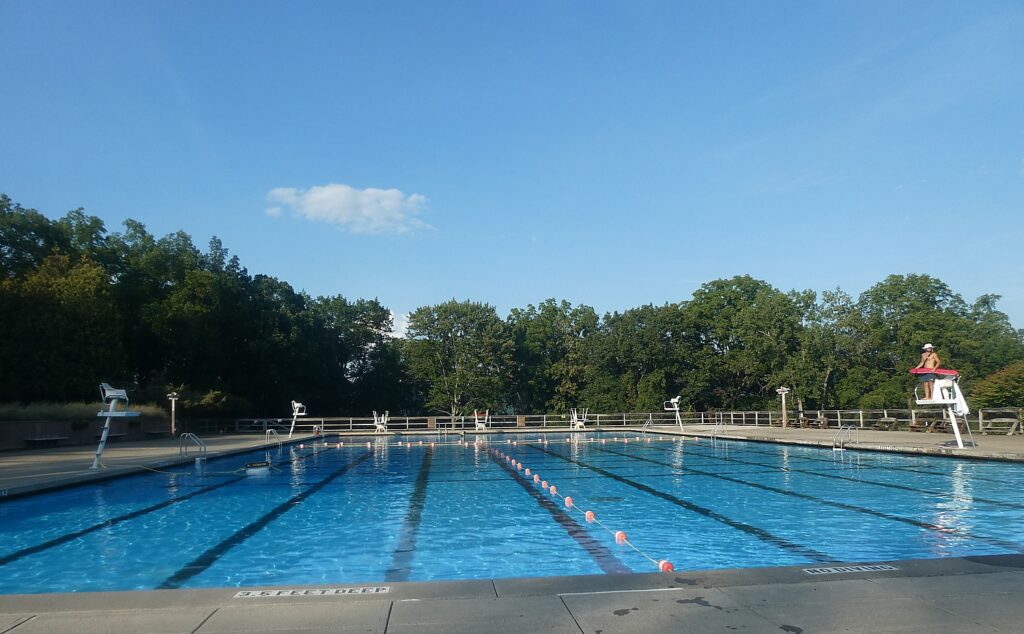
It is no wonder that Watkins Glen State Park was awarded the third best among 6,000 state parks nationwide in 2015, and is consistently among the state’s top parks.
Watkins Glen State Park, 1009 N Franklin St, Watkins Glen, NY 14891, 607-535-4511, https://parks.ny.gov/parks/watkinsglen/maps.aspx.
There is so much to do in Watkins Glen, in the heart of the Finger Lakes, you could easily make this your base for a week.
Auto enthusiasts know Watkins Glen for its famous NASCAR races. The pavement is dotted with names of winners throughout the years, the crosswalks painted like the race start/finish. Auto racing is still sacred here, with much of the quaint village (the downtown was a recipient of New York State’s $10 million Downtown Revitalization Initiative award) themed for autos.
Wine enthusiasts know Watkins Glen as the southerly point of Seneca Lake, from which you can drive up Winery Trails on both sides.
Nearby is the Corning Museum of Glass; about 1 ½ hours drive away is another jewel, Letchworth State Park, “The Grand Canyon of the East,” where we camped and hiked last year; a half-hour away is Ithaca.
The Finger Lakes region has over 1,000 waterfalls and gorges, 650 miles of shoreline, more than 16,000 acres of National Forest, and over 2,000 miles of hiking and biking trails. There is plenty to explore indoors at museums, art galleries, historic sites, theaters, wineries, breweries.
With summer turning to fall foliage season (which is amazing here), plan early and secure tickets and lodging.
Excellent planning aids are available from The Finger Lakes Tourism Alliance, 309 Lake Street Penn Yan, NY 14527, 315-536-7488, 800-530-7488, www.fingerlakes.org.
New York State Begins Weekly ILoveNY Fall Foliage Reports; New Interactive Map
The 2021 fall foliage season is underway in New York State. Fall is one of the most popular travel times in New York, attracting visitors from around the world to explore the state’s unique communities and support local businesses. To help travelers and foliage enthusiasts plan a fall getaway, I LOVE NY has begun issuing its weekly fall foliage reports and will now include a new enhanced interactive progression map (www.iloveny.com/foliage).
The foliage report is compiled each week using the on-location field observations from I LOVE NY’s team of volunteer leaf peepers. More than 85 spotters extending across the state’s 11 vacation regions are tasked with keeping track of the color change in their area as leaves progress each week. Reports detail the predominant leaf colors, approximate percentage of change, and how much color change has progressed relative to peak conditions.
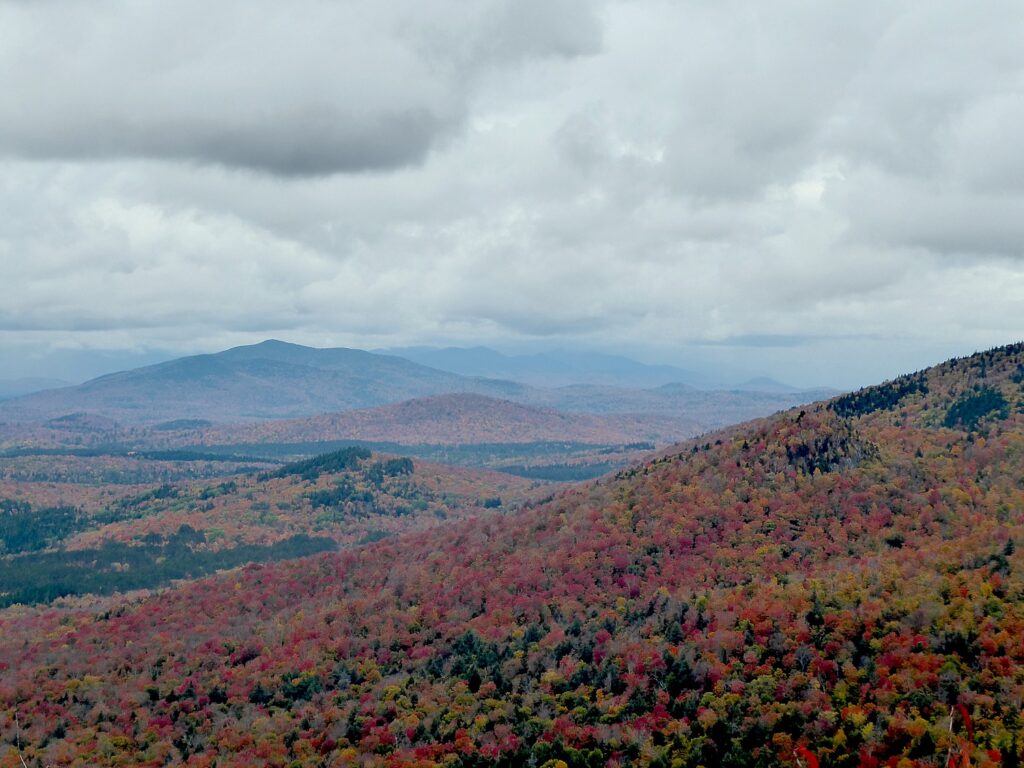
New this year, I LOVE NY is introducing an enhanced, interactive map that tracks weekly foliage change and progression across the state throughout the season. The map, located on the I LOVE NY foliage website, showcases great foliage viewing locations in each of the various regions throughout the state. Visitors can also use the map to see what the foliage is like during peak viewing in a given area, and learn about nearby, must-see attractions.
Thanks in part to its size and location, New York State has one of the longest and most colorful foliage seasons in the country. On any weekend from late September through mid-November, part of the state is likely experiencing peak foliage.
Travelers are also invited to share their photos of New York State’s amazing foliage on social media by using the #NYLovesFall hashtag. Photos submitted to this hashtag have a chance of being featured on the I LOVE NY fall foliage website and official I LOVE NY social media accounts reaching nearly two million followers. Reports and the new interactive map are updated Wednesdays throughout the season at www.iloveny.com/foliage.Reports are also available toll-free by dialing 800/CALL-NYS (800/225-5697) from anywhere in the U.S., its territories and Canada. For more information on how to volunteer for as an I LOVE NY leaf peeper, e-mail your name, address and phone number to foliage@esd.ny.gov.
______________________
© 2021 Travel Features Syndicate, a division of Workstyles, Inc. All rights reserved. Visit goingplacesfarandnear.com, www.huffingtonpost.com/author/karen-rubin, and travelwritersmagazine.com/TravelFeaturesSyndicate/. Blogging at goingplacesnearandfar.wordpress.com and moralcompasstravel.info. Send comments or questions to FamTravLtr@aol.com. Tweet @TravelFeatures. ‘Like’ us at facebook.com/NewsPhotoFeatures
